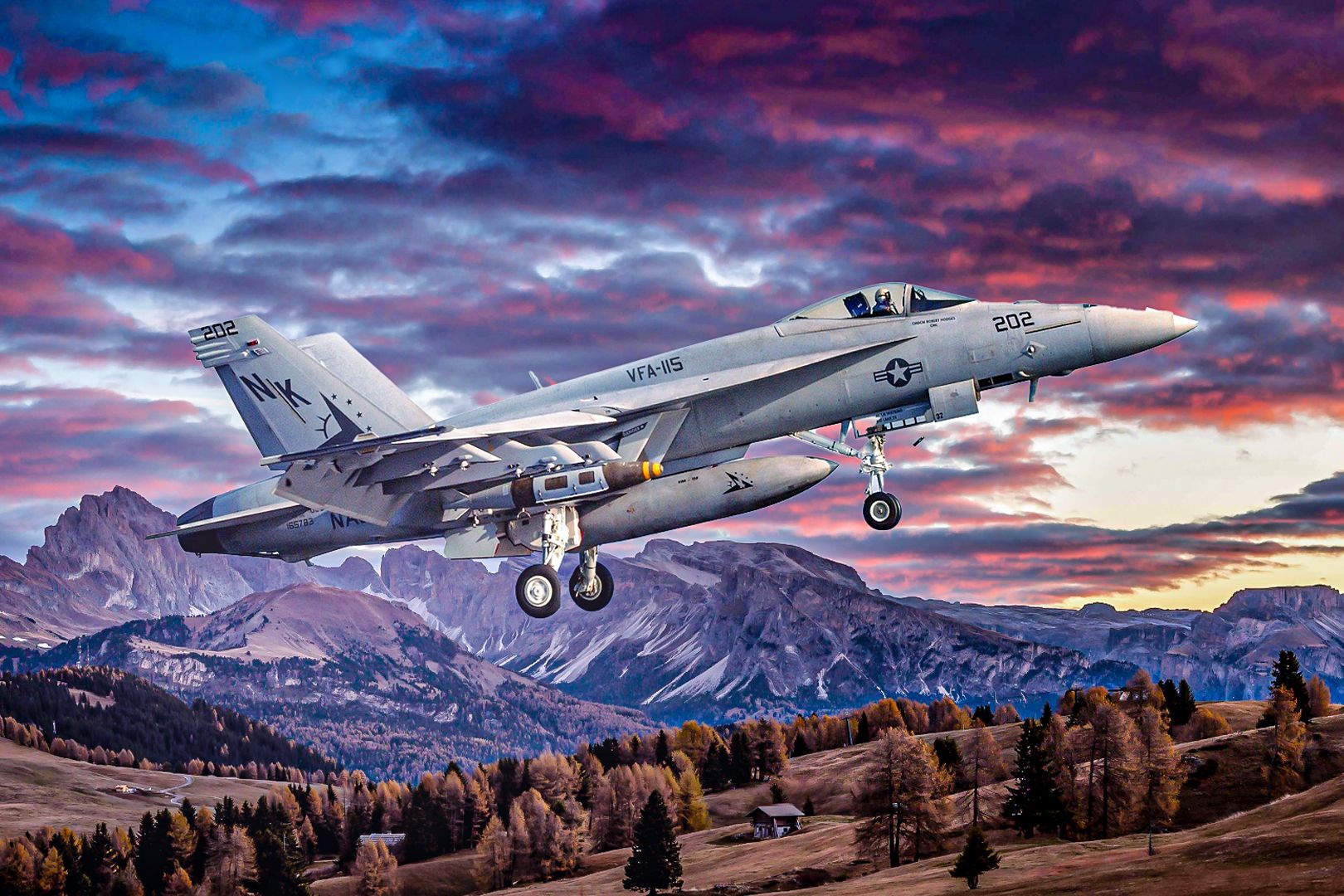Summary F/A-18 Hornets excel in air defense, air interdiction, and combat missions worldwide. F/A-18s showcased power, versatility, and reliability in historical operations like the Gulf War. The US Navy and Marine Corps are preparing to phase out F/A-18 Hornets by 2025 for cost-saving purposes.
The McDonnell Douglas F/A-18 Hornet and Super Hornet aircraft have long been the backbone of the US Navy fleet. The all-weather multirole F/A-18 Hornet was designed as a fighter and attack aircraft for the Navy. Since the mid-1980s, the highly versatile aircraft has been involved in various US military missions.

Capable of performing air defense, suppressing enemy targets, air interdiction, aerial reconnaissance, and providing close air support, the Hornet fleet stands out from its competition in the aerial battlefield. Length : 56 feet (16.8 meters) Height : 15 feet 4 inches (4.
6 meters) Wingspan : 40 feet 5 inches (13.5 meters) Weight : Maximum Take Off Gross Weight is 51,900 pounds (23,537 kg) Propulsion : Two F404-GE-402 enhanced performance turbofan engines. 17,700 pounds of static thrust per engine Airspeed : Mach 1.
7+ Ceiling : 50,000+ feet Range : Combat: 1,089 nautical miles (1252.4 miles/2,003 km), clean, plus two AIM-9s Ferry : 1,546 nautical miles (1777.9 miles/2,844 km), two AIM-9s, plus three 330-gallon tanks.
Libyan air defenses Operations Prairie Fire and El Dorado Canyon were some of the first times F/A-18 Hornets saw action in April 1986. Four Hornets from the USS Coral Sea flew enemy air defense suppression missions against Libyan air defense forces. The US military deployed its aircraft in the disputed Gulf of Sidra in the Mediterranean Sea to enforce the standard 12-NM territorial limit within international waters.
During Operation El Dorado Canyon, the US military conducted air strikes against Libya in retaliation for the bombing in West Berlin. The US aircraft destroyed nearly 20 opposition aircraft, including two helicopters. Five major ground radars were destroyed, and nearly 45 enemies were killed.
The Super Hornet became a celebrity thanks to the film 'Top Gun: Maverick.' The Gulf War F/A-18 Hornet deployments US Navy: 106 F/A-18A/C US Marine Corps: 84 F/A-18A/C/D During the Gulf War in 1991, 190 Hornets were deployed between the Navy and the Marine Corps. Two Navy Hornets faced a brief dogfight with Iraqi MiG-21 fighters (Bandits).
The Navy pilots shot down two MiG-21s using AIM-7 and AIM-9 guns while en route to bomb H-3 in southwestern Iraq. Carrying four 2,000-lb bombs each, the Navy Hornets needed 40 seconds to shoot down the two targets. F/A-18 armament One M61A1/A2 Vulcan 20mm cannon AIM 9 Sidewinder AIM 7 Sparrow AIM-120 AMRAAM, Harpoon, Harm, SLAM, SLAM-ER, Maverick missiles Joint Stand-Off Weapon (JSOW) Joint Direct Attack Munition (JDAM) Several general-purpose bombs, mines, and rockets The F/A-18 is an extremely capable family of multirole fighter jets able to fulfill a broad range of missions for the Navy.
Operation Desert Storm With the retirement of A-6 Intruders, the military F/A-18s filled the role, demonstrating versatility and reliability in the skies above the battlefield. Operation Desert Storm, the American-led liberation of Kuwait, provided another opportunity for the US military Hornets to showcase their true power. From direct shot-downs of enemy fighters to bombing enemy targets, the Hornets continued to prove their capabilities, particularly during critical missions.
According to the Naval Air Systems Command , “The Hornet demonstrated its capabilities and versatility early in its life cycle during Operation Desert Storm, wherein the aircraft shot down enemy fighters and bombed enemy targets within the same mission, proving its lethal effectiveness as a strike fighter." "Hornets taking direct hits from surface-to-air missiles, recovering successfully, being repaired quickly, and flying again the next day further cemented the robustness and survivability of the aircraft.” Enemy target destruction during Operation Desert Storm Tanks : 3,300 APCs : 2,100 Artillery pieces : 2,200 Aircraft : 110 Ships damaged : Six Ships sunk : 19 Enemy aircraft forced out : 137 (to Iran) Operations in Iraq Operation Southern Watch was an air-centric military operation conducted by the US Department of Defense to ensure the Iraqi government complied with the resolution following the Gulf War.
The US military Hornets played a major role in the operation, identifying and attacking ground targets. In the years following that, the US Navy and Marine F/A-18s (various variants) were used in Operation Southern Watch. In 2001, the US Navy flew its Hornets during Operation Enduring Freedom from aircraft carriers in the North Arabian Sea.
During Operation Iraqi Freedom in 2003, both the Hornets and newer Super Hornets (F/A-18E/F) were operated from an air base in Kuwait. Both the US Navy and Marine Corps are phasing out their F/A-18 Hornets. According to the Naval Air System Command, “The F/A-18 Hornet remains the workhorse of Marine Corps tactical aviation and supports operational deployments around the globe.
It will serve as the Marine Corps’ primary bridging platform to the F-35 until its planned sundown in 2030.” While the initial plan was to rely on the fleet well into the 2030s, the agencies are determined to phase those out by 2025 to save money and improve safety. The US Navy will deploy a squadron of F-35Cs on a carrier to Japan while the Air Force also positions more F-35As in Japan.
.



















